
Plants are highly sophisticated creatures evolved to adapt to the environment. Through the centuries they developed skills to locate the Sun, sense chemicals, fight predators, maximize food opportunities, self replicate and move. The way they move is through seeds, tiny bodies containing the entire genetic information of the species. Depending on the dispersal strategies seeds developed their own morphology: some have hair, some wings, some parachutes; some plants act like catapults to shoot their seeds as far as possible, while others evolved to not open up until they sense enough moisture.
Unfortunately, there are only certain distances seeds can disperse and the dramatic changes in the past two centuries make it extremely difficult. Changing climate, rapid growth of cities, adaptive land use and the introduction of alien species – these are main reasons why plant seed dispersal strategies have become inefficient, and why plants die out one after another. As a result, today 60,000 to 100,000 species of plants are faced with the threat of extinction.
Seed Banks are institutions dedicated to stop the extinction process. Researchers collect, organize, research, conserve and regenerate seeds outside their native environment and ship them to original location in order to restore natural habitat. Even though there are multiple seed banks operating all around the world, biodiversity has a time limit.
“Seedarium” serves as a prototype for international seed banks; the building includes seed vaults and labs, temporary accommodation for local and travelling researchers, and educational and touristic facilities. It is located on Cape Solitude, South Rim in the Grand Canyon National Park, a favorite hiking destination, where the appearance of such a large scale project would attract a lot of attention and act as a reminder of the loss of biodiversity.
The location of each seed bank, including Seedarium, is selected carefully, based on climatic and geographic predictions, economic consistency, biodiversity hotspots and plant hardiness zones. Keeping in mind the impact of political conflicts and wars on the maintenance of collections, each bank is remote from cities, yet close to public flow in order to raise public awareness.
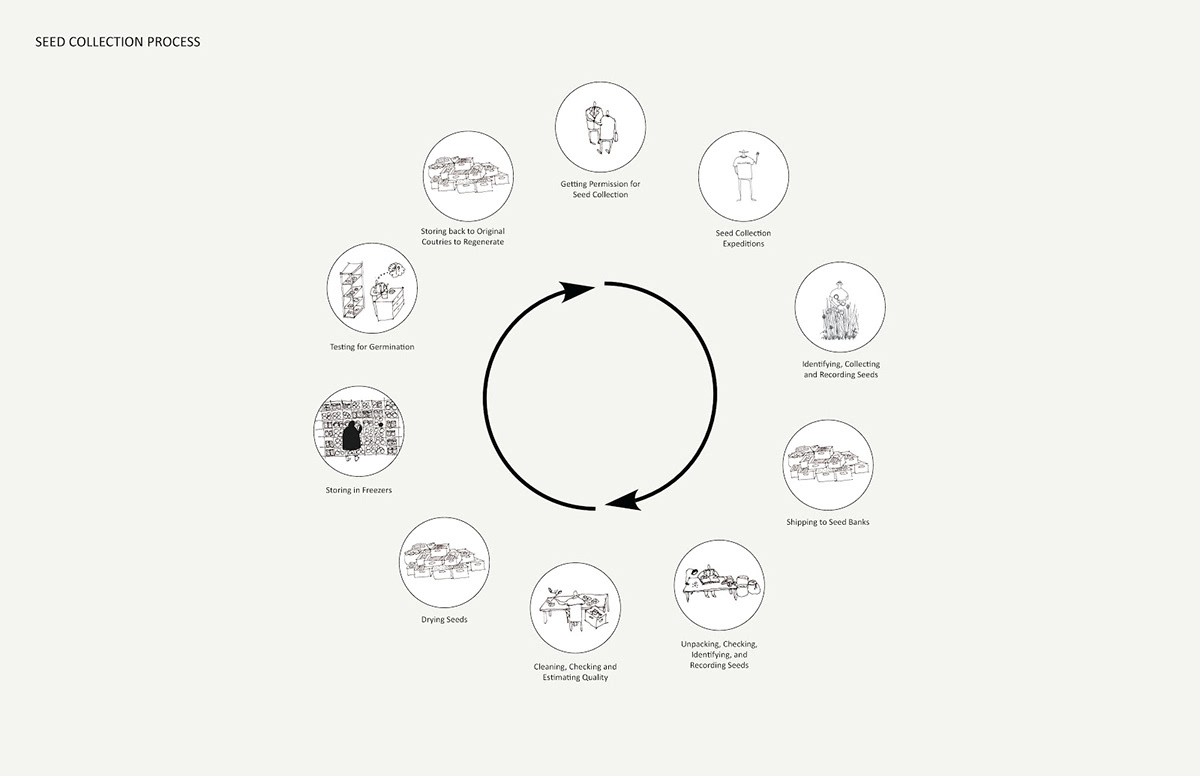

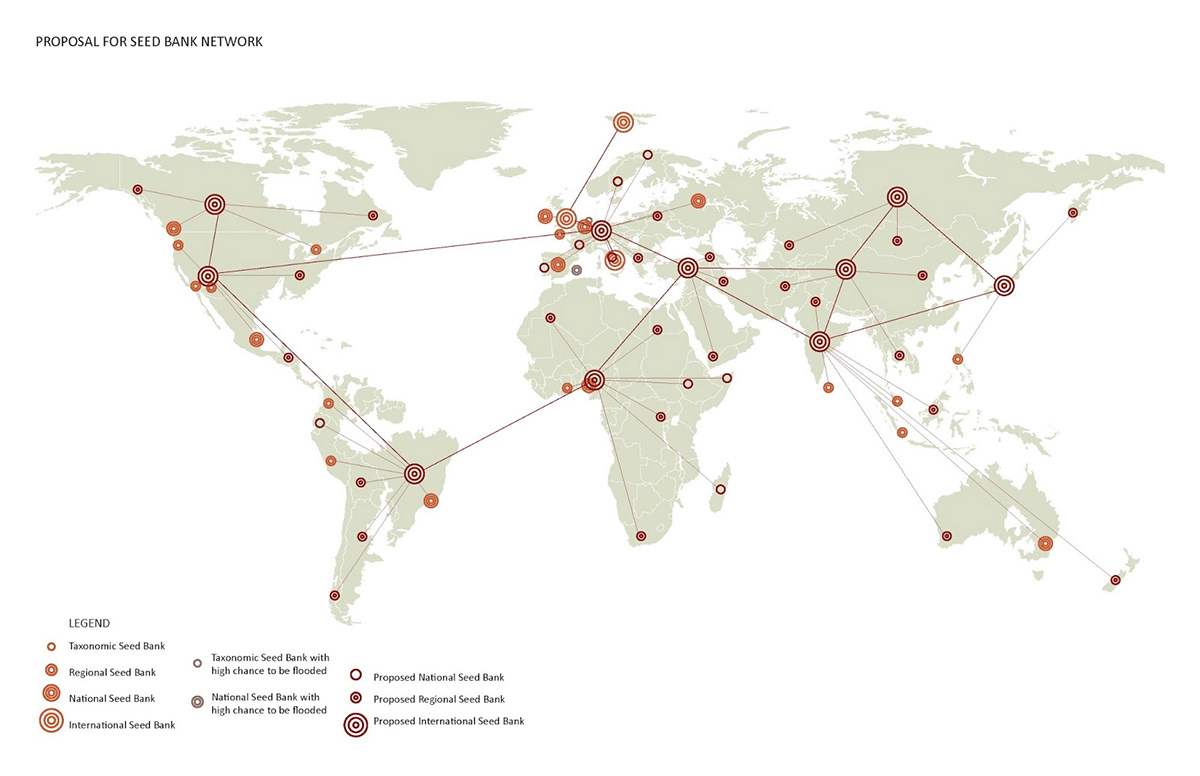
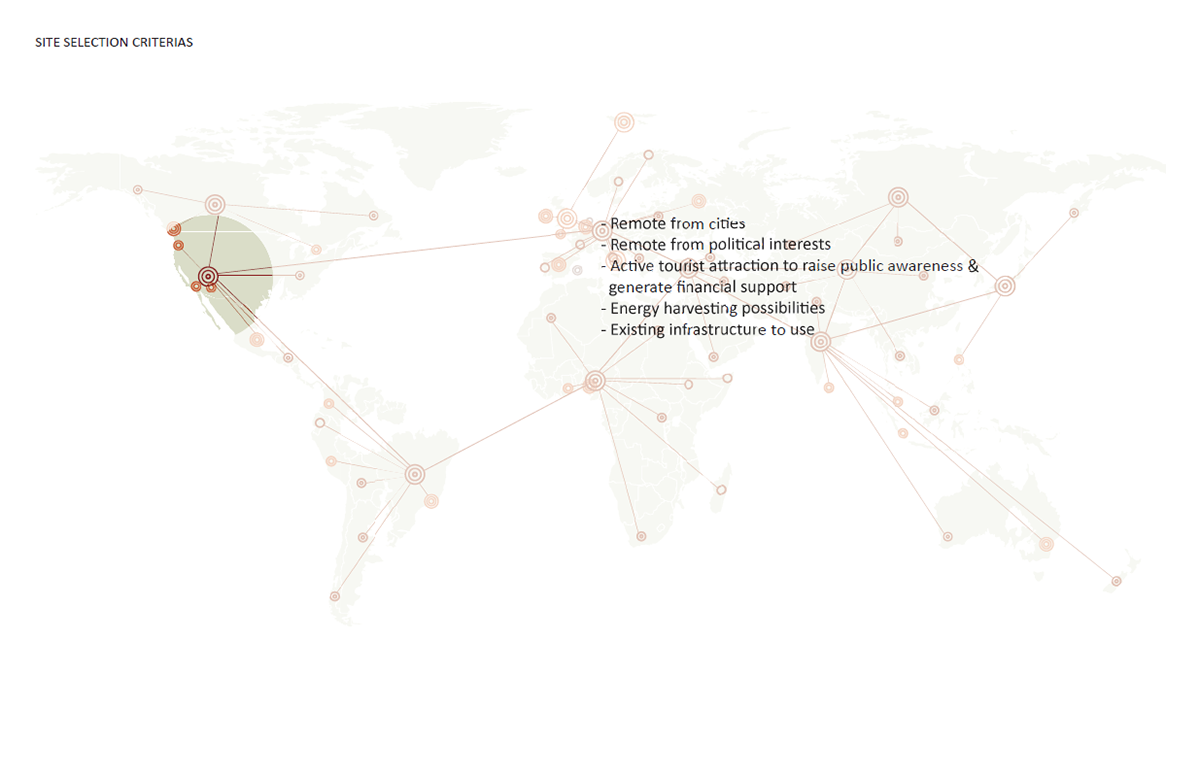
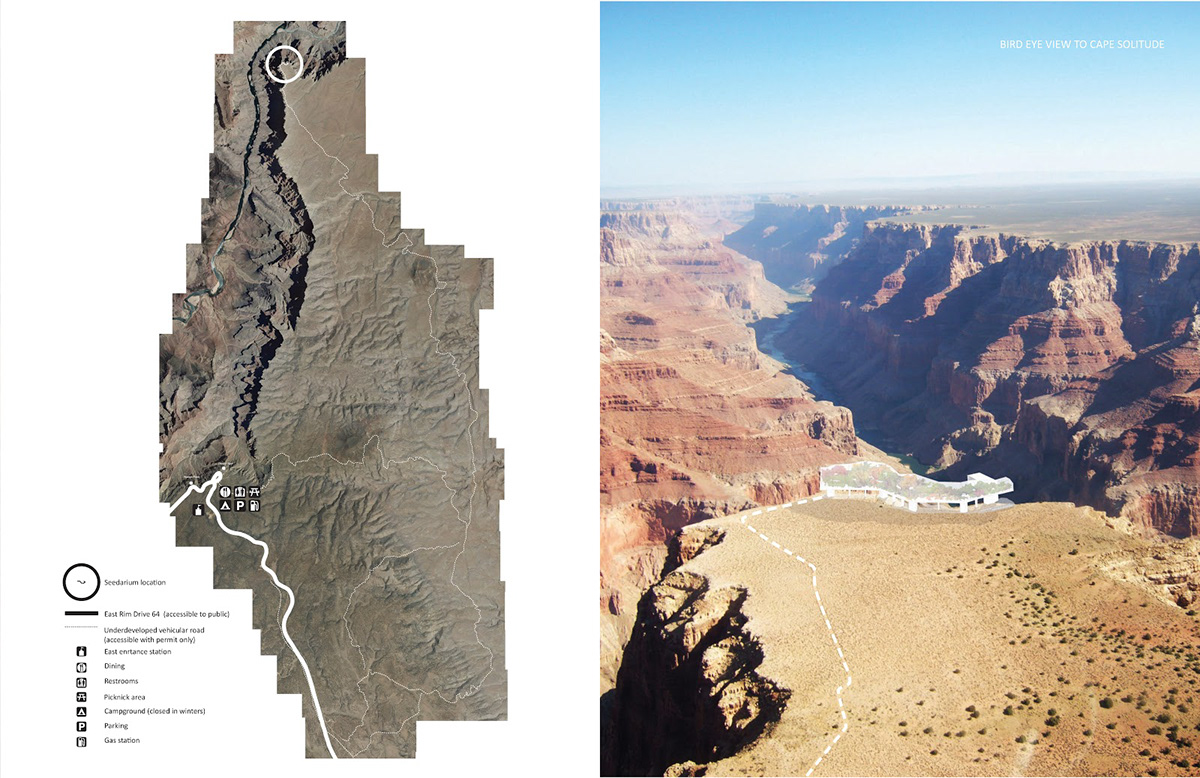

Cape Solitude is one of the favorite lookout points on the South Rim for hikers. Tourists walk miles to see the confluence of the main stem of the Colorado River with the Little Colorado River.
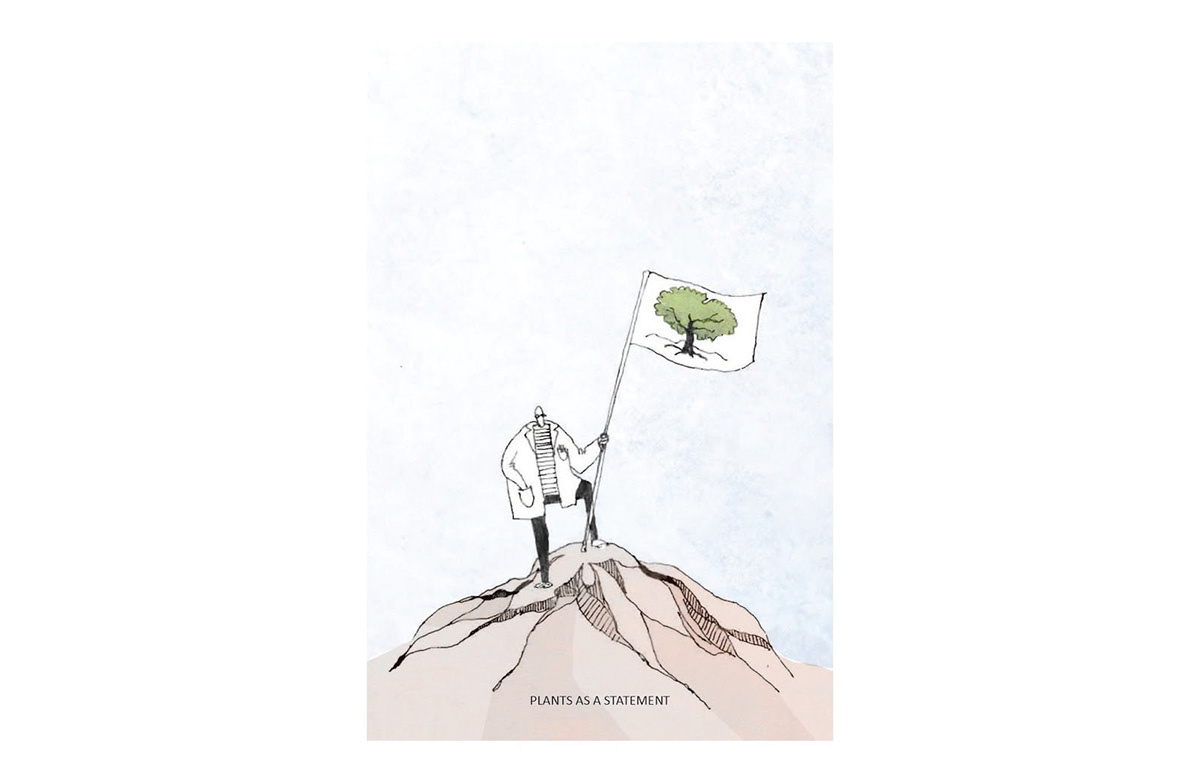
The largest part of the program consists of greenhouses and botanic gardens for endangered plant species. They are celebrated creating an “oasis”.

Cool temperature undergdound provides a constant temperature for seed storage.
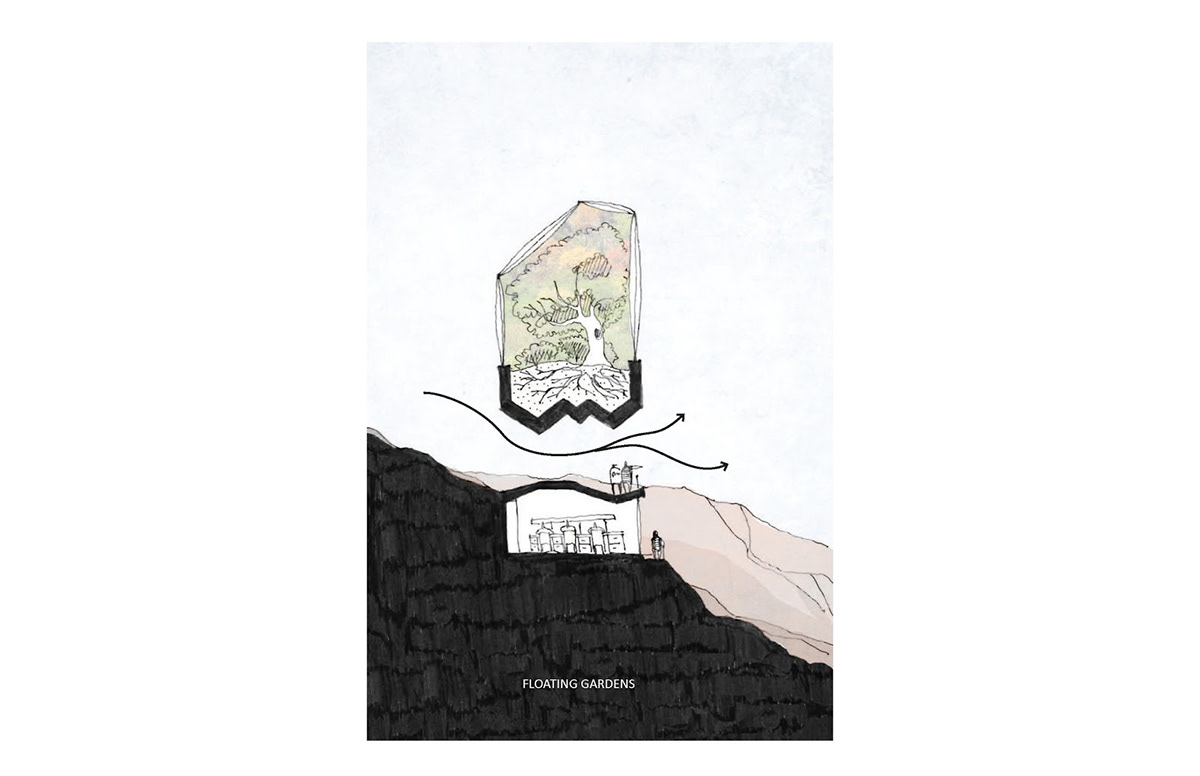
Plants are lifted up in the air, while the rest of the program is pushed underground. This creates an open space for people to overlook the confluence of the Grand Canyon rivers.

Seed collection process reminds me of ant labor - they too collect seeds and store them for future.
The structure of termite nests was used as inspiration for the building layout; a glass tube, which will follow the building and allow visitors to enjoy the view towards the canyon, is a representation of traces ant colonies leave in ant farms
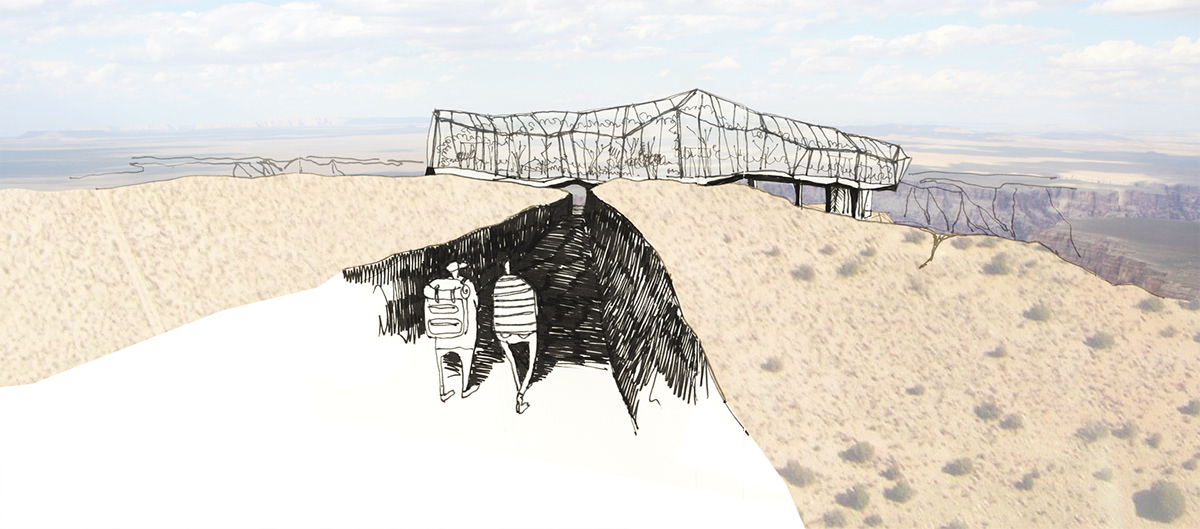
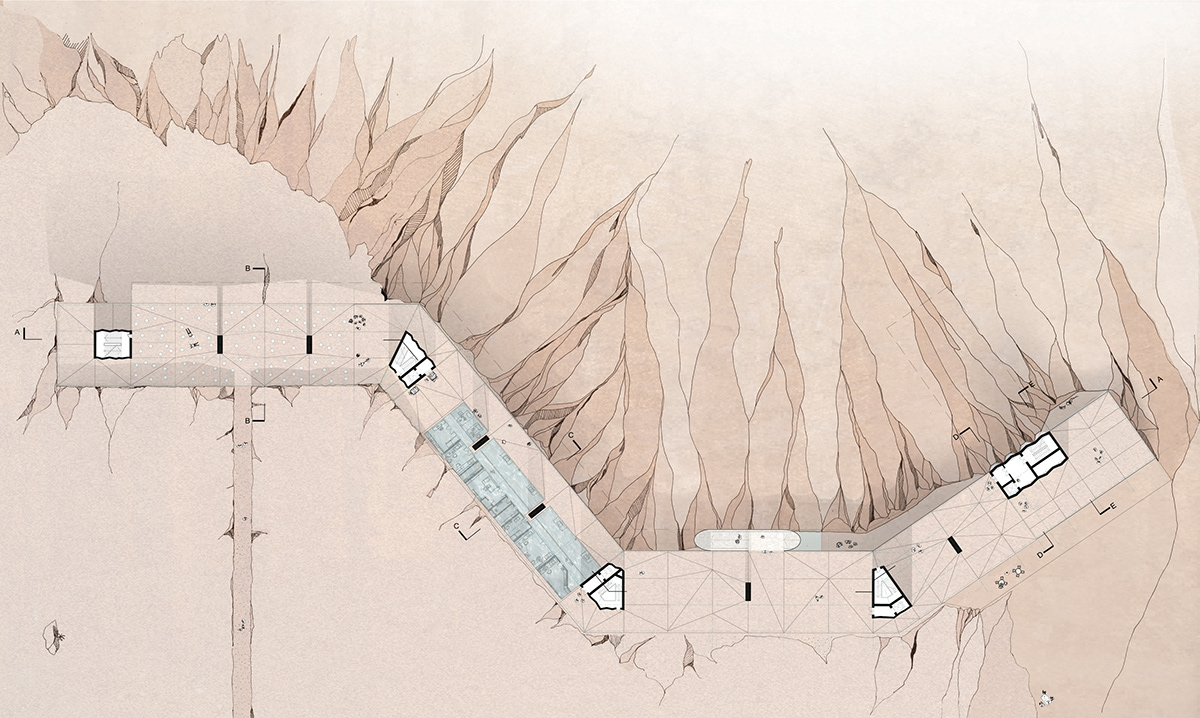
The building is following the terrain of the northern edge of the Cape Solitude. The layout maximizes southern solar exposure for the greenhouses. The ground floor is almost invisible in plan; public plaza is created by megalithic limestone plates from excavation, tilted in different directions to immitate a terrain.
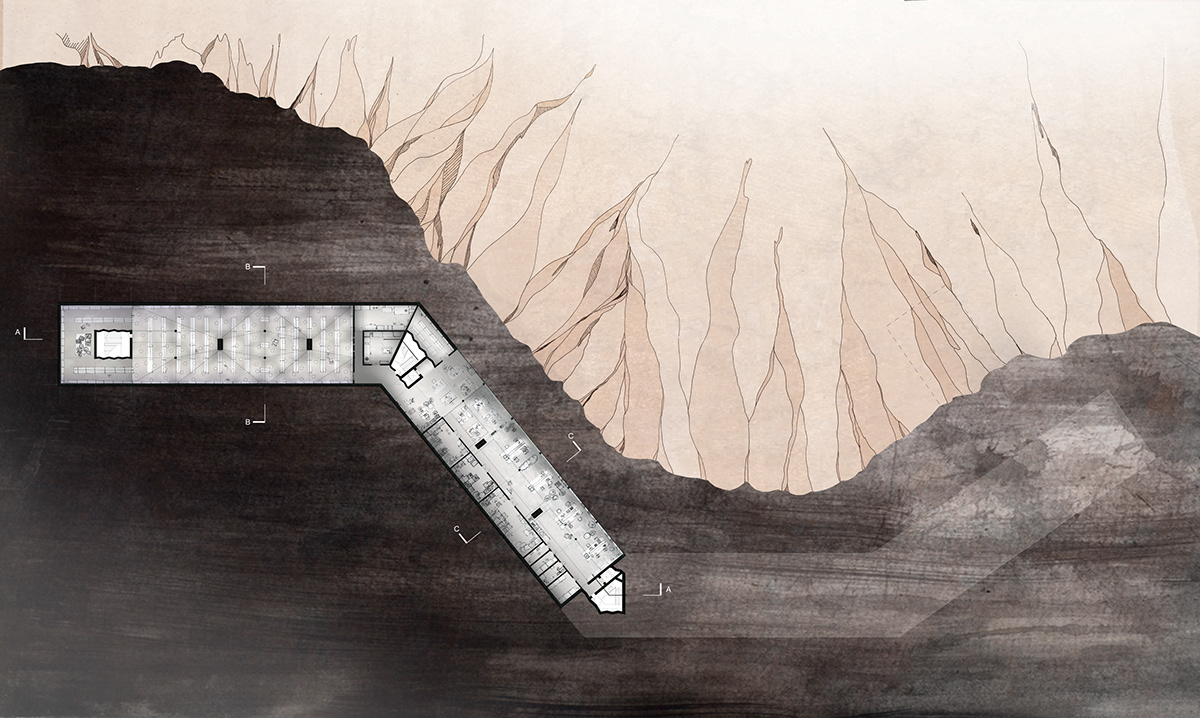
Seeds are distributed through the vertical core to -2 floor, where seed reception is located. After seeds are identified and catalogued, they are cleaned from extra structure, their quality is assessed and later they prepared for drying. After drying seeds are packed, labeled and stored in special freezers, seed vaults.
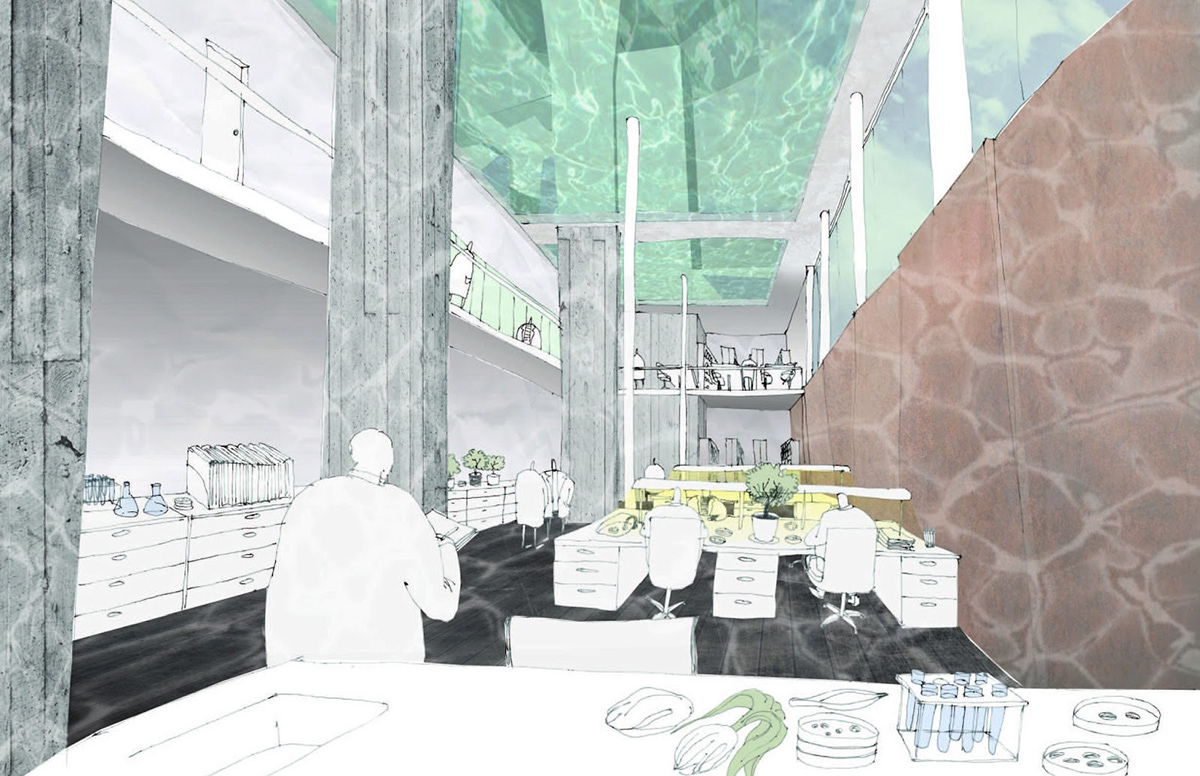
On top of the two storey lab spaces a rainwater pool is located. As the southern sun hits the pool, it creates playful reflections.
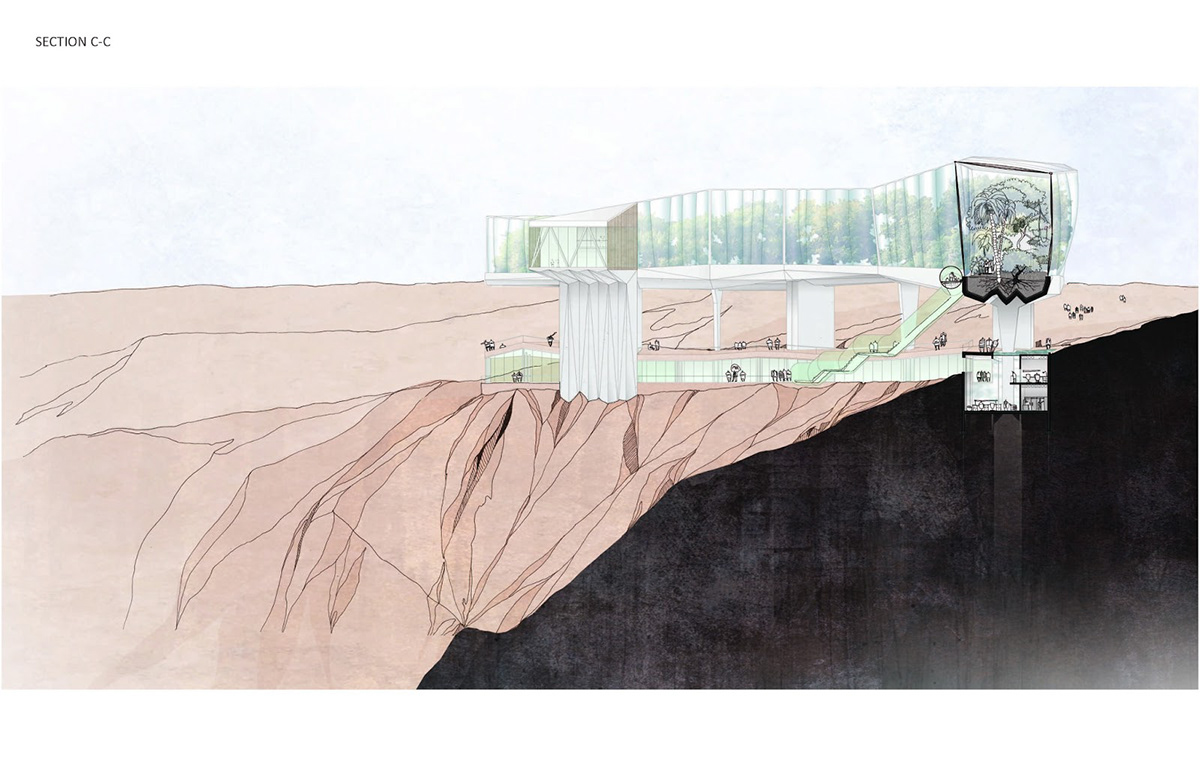
-2 floor general labs are open to see for tourists from specially designed windows or through the rainwater pool.
Vertical circulation tube outside the building connects underground facilities to greenhouses; it is also used for building’s heating and cooling energy distribution.
Vertical circulation tube outside the building connects underground facilities to greenhouses; it is also used for building’s heating and cooling energy distribution.

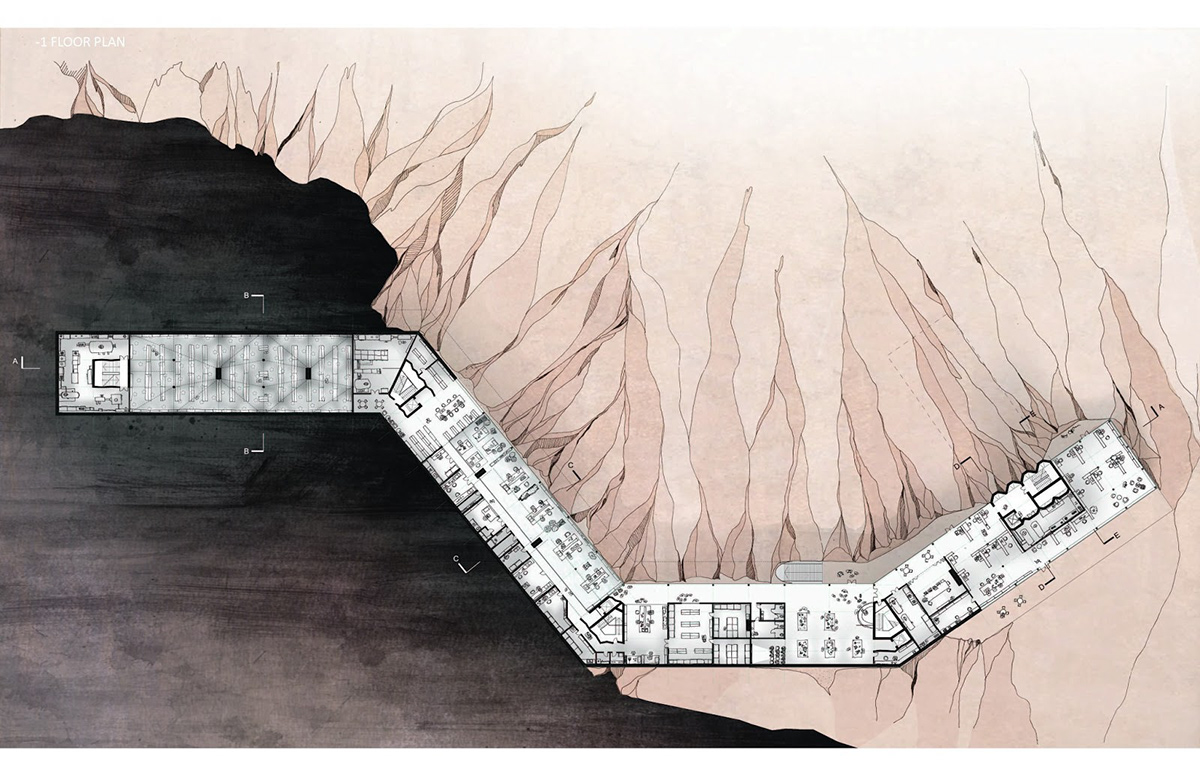
In every 10 years seeds are taken out from vaults and tested for germination. Germination labs and supporting facilities are located on -1 floor; the labs can be observed by tourists from the specially designed windows. The east part of the building is occupied by administration and office spaces.
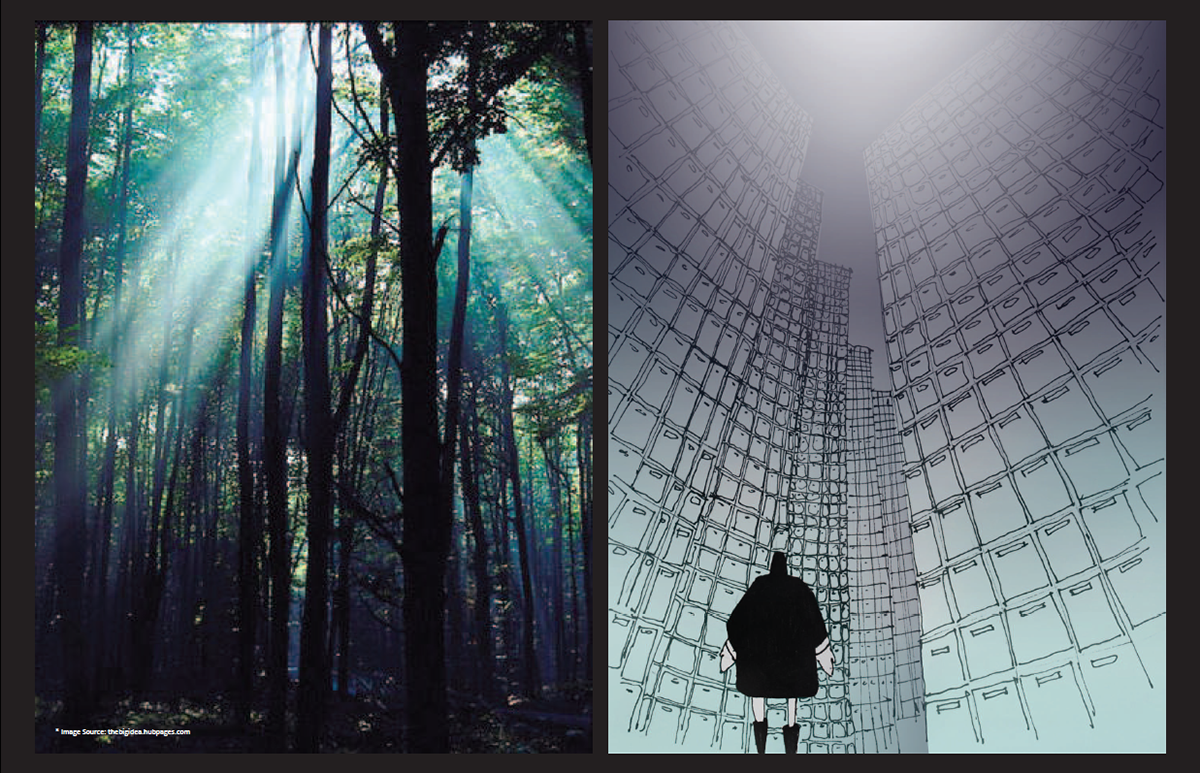
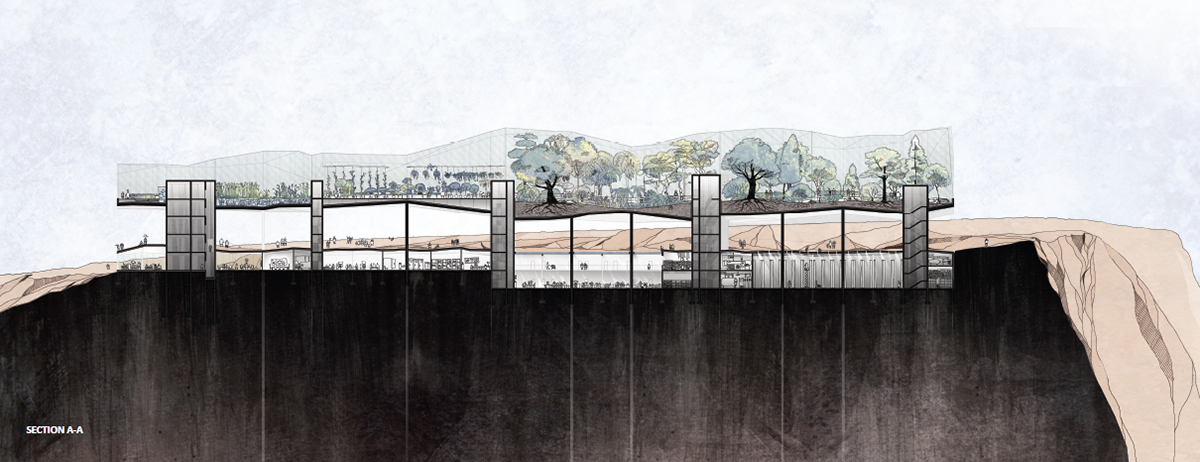
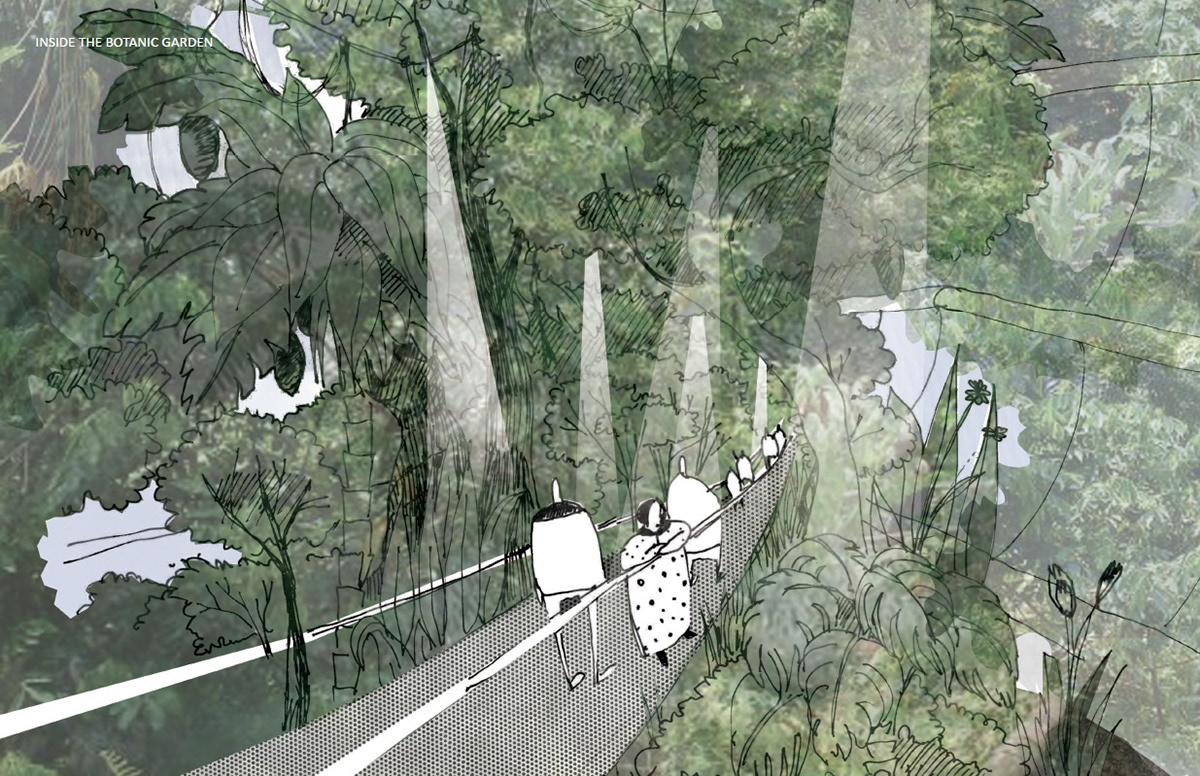
The building allows visitors experience different plant biomes, including tropical rainforest, as they walk in the Grand Canyon.
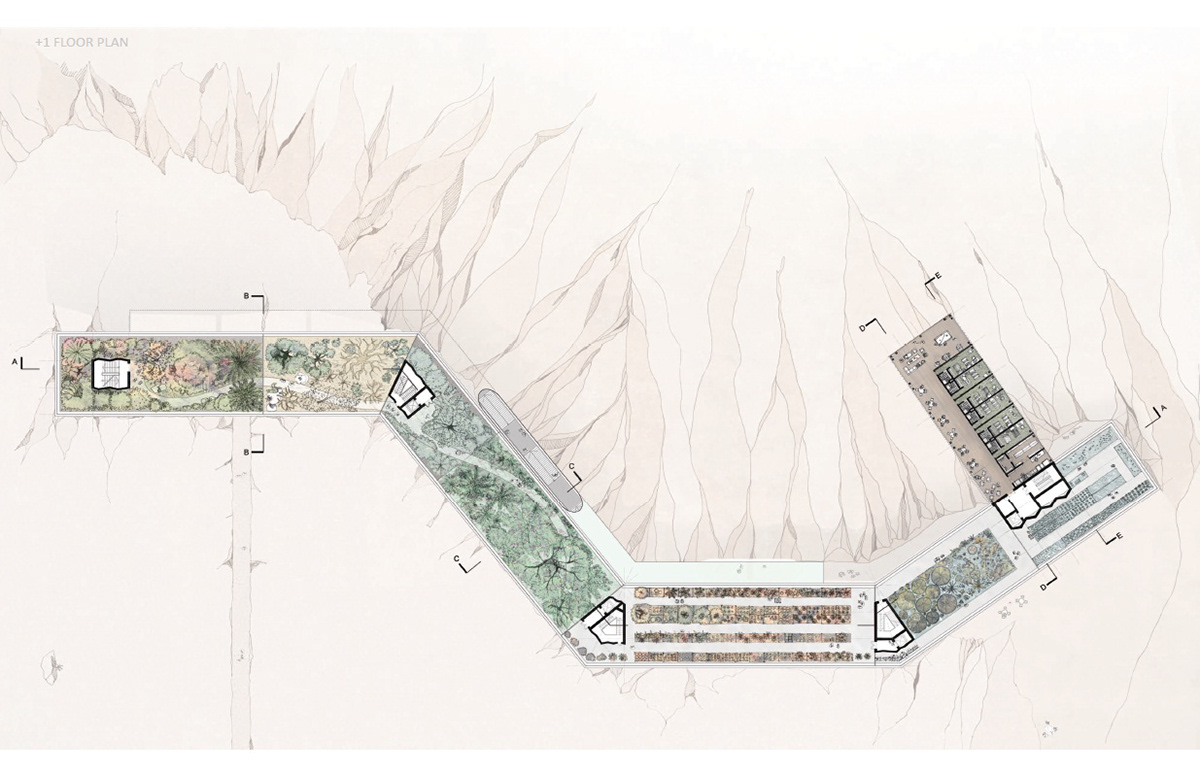
+1 Floor Plan shows botanic gardens for endangered species; the garden is divided according to plant hardiness zones and biomes; it slowly turns into more conventional greenhouses, where scientists regenerate seeds, and aquaponic system, where they grow food for researchers. Housing unit is cantilevered 100 feet over the canyon.

Housing - Lounge space interior
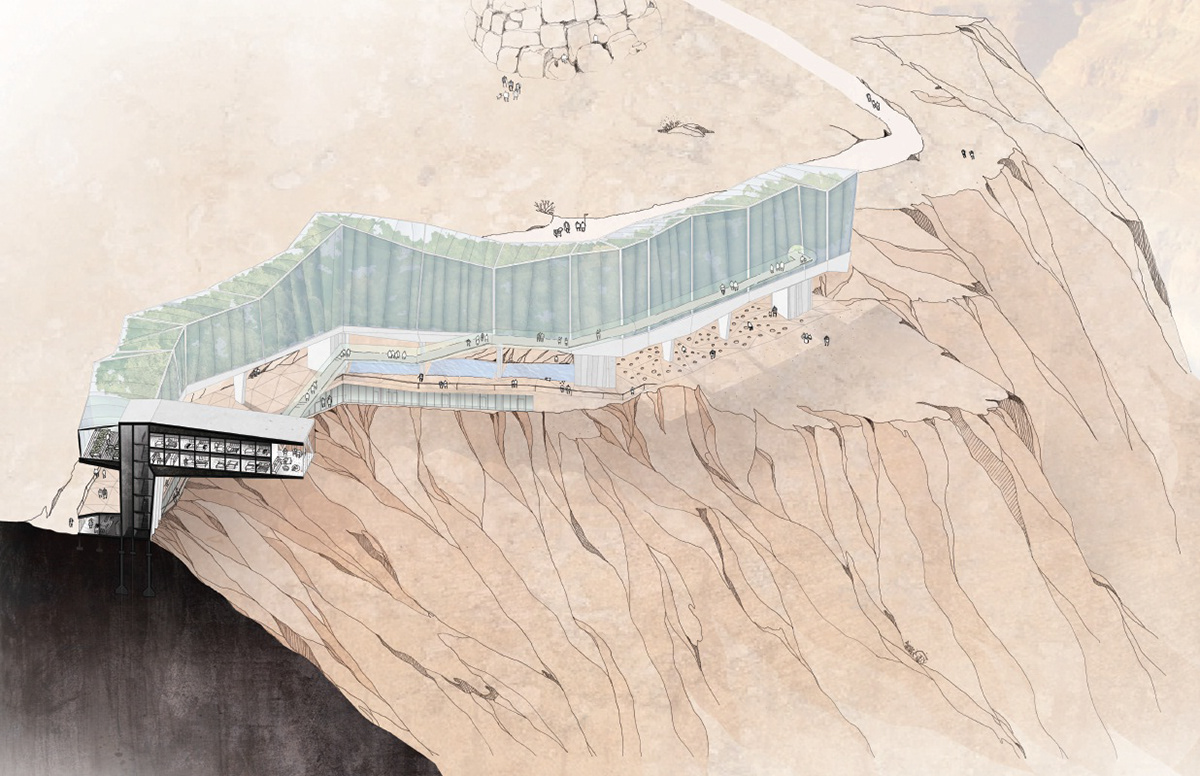
Section E-E showing housing units
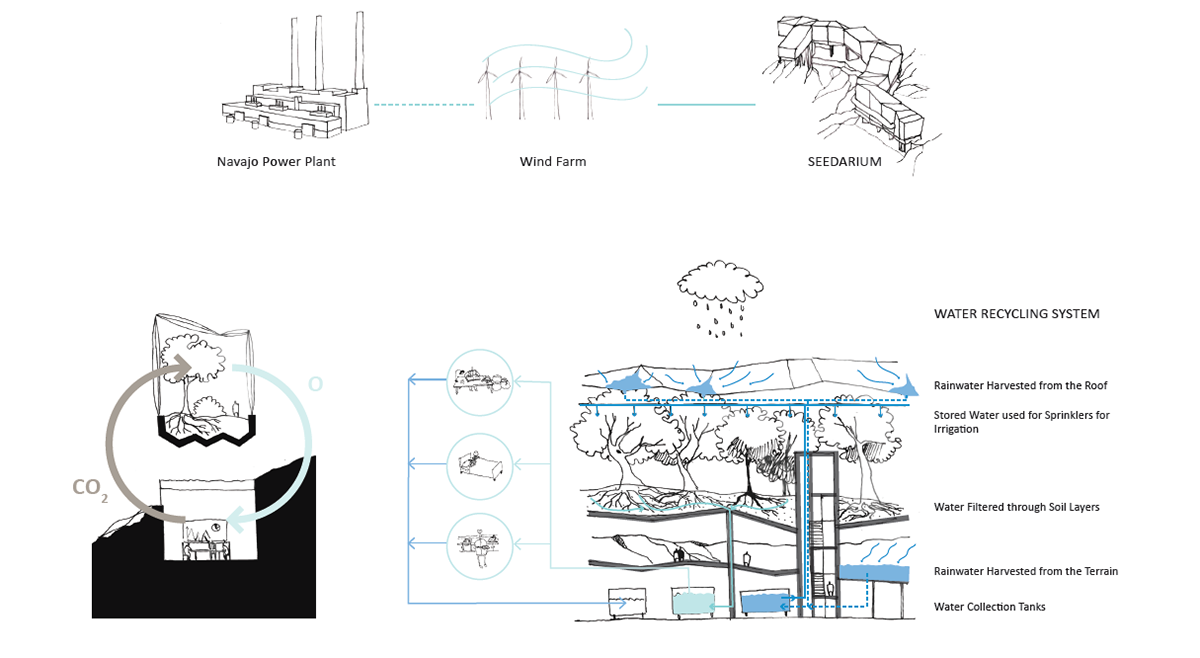
Grand Canyon has a high potential for wind energy harvesting. As part of the project I am proposing to harvest it in a wind farm, which could slowly replace Navajo Power Plant, the highest air pollutant of the area. Seedarium could use part of the energy, and unused part could be brought back to the grid.
The building uses multiple passive strategies, including saving heating/cooling energy because of the underground location, recycling harvested rainwater from the labs to greenhouses and other way around, and recycling air - CO2 from workspaces could be used for plant nutrition and oxygen from plants could be supplied back to the labs and offices.
The building uses multiple passive strategies, including saving heating/cooling energy because of the underground location, recycling harvested rainwater from the labs to greenhouses and other way around, and recycling air - CO2 from workspaces could be used for plant nutrition and oxygen from plants could be supplied back to the labs and offices.
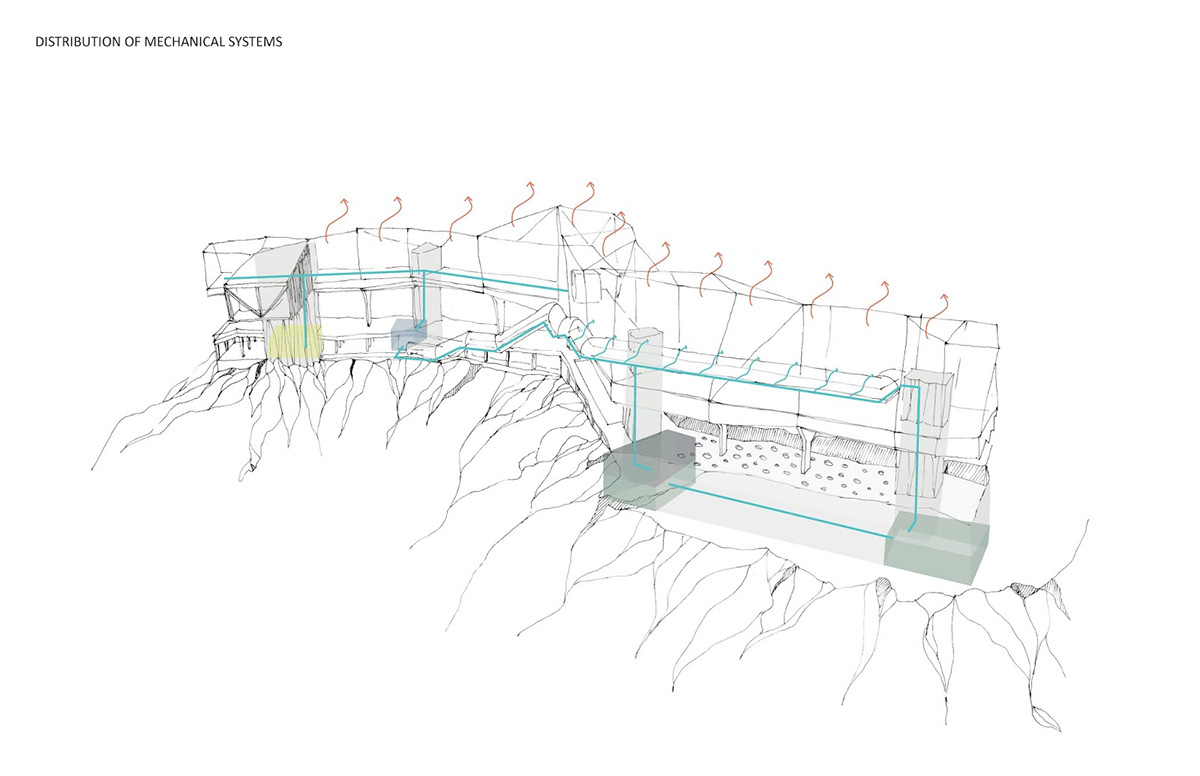

Because of the large underground location needs a lot of limestone will be excavated. Excavated stones will be piled up in circular towers along the main pathway, creating megalithic towers for tourists. Each tower will have a different function - one will collect rainwater and provide a swimming pool for visitors, while other will be a sleep tower.

Megalithic towers will both orient the visitor’s view towards the sky. Like ancient observatories, which were deep holes dug in earth, they will capture beautiful view of clouds during the day and mesmerizing stars at night. The connection to the sky highlights the existence of the larger world than ours, the endless universe.
After all, our planet is only a tiny part of it and the problems on Earth are easier to solve, than imagined.
After all, our planet is only a tiny part of it and the problems on Earth are easier to solve, than imagined.

